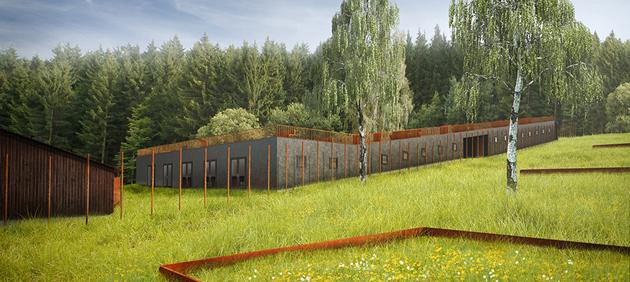Czech Republic: Romani Holocaust memorial to be created within two years in Hodonín

The building of a memorial to the former labor and concentration camp at Hodonín by Kunštát is now continuing. "In July the construction site was handed over and digging work is currently underway at the site," Petra Holovková, director of the Hodonín Memorial department of the Jan Amos Comenius National Museum and Library, has informed news server Romea.cz.
The former camp was located in the forest near Hodonín and was called Žalov (which roughly translated means "place of sadness"). First it was used as a disciplinary labor camp for the unemployed before being transformed into a so-called "Gypsy camp" in 1942.
During WWII a total of 1 300 Romani people from Bohemia and Moravia were concentrated there, some of whom were transported to the death camp at Auschwitz-Birkenau. A total of 207 Romani people did not survive their imprisonment at Hodonín.
In 2009, reconstruction began of the grounds of the former concentration camp and a plan was developed for the building of a memorial there. The construction of that memorial was entrusted to the Jan Amos Comenius National Pedagogical Museum and Library by a Czech Government resolution.
In 2013 the Museum opened up a competition for the design of the memorial which was won by a young architecture student, Richard Pozdníček, and the landscaping is now proceeding according to his proposal. The resulting form of the memorial will not include the usual stone tablet – rather, the memorial is designed as a reverent treatment of the area involving the reconstruction of the camp barracks and guard house.
At the very center of the space an Information Center will serve as a gathering place for visitors to learn more, not just about the history of the camp, but about the Holocaust and totalitarian regimes in general. The Museum is closely collaborating with many leading Czech historians, with the Museum of Romani Culture, and with the former prisoners and their surviving relatives.
One member of the commission that decided the winning architectonic plan for the memorial was Karel Holomek, whose family is closely connected with the history of Moravian Roma. The memorial will include a permanent exhibition to be designed by the Museum of Roma Culture; it is scheduled to open in mid-2017.